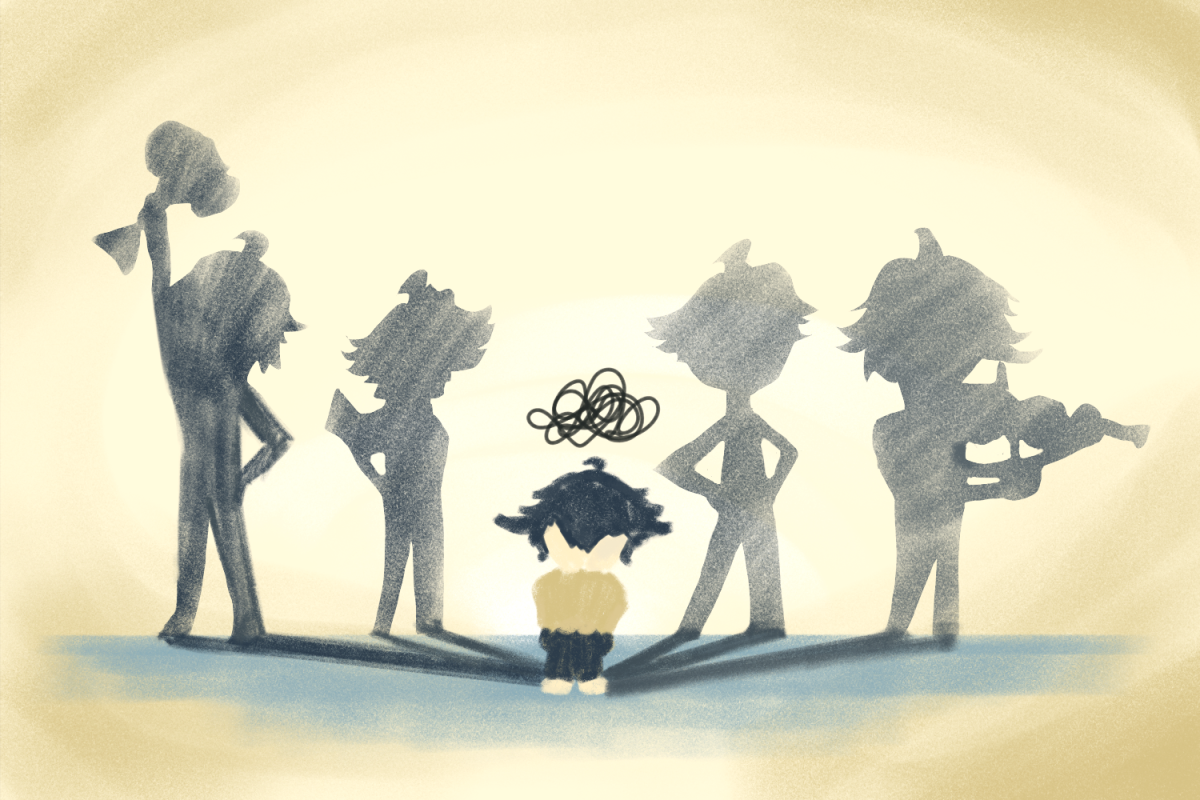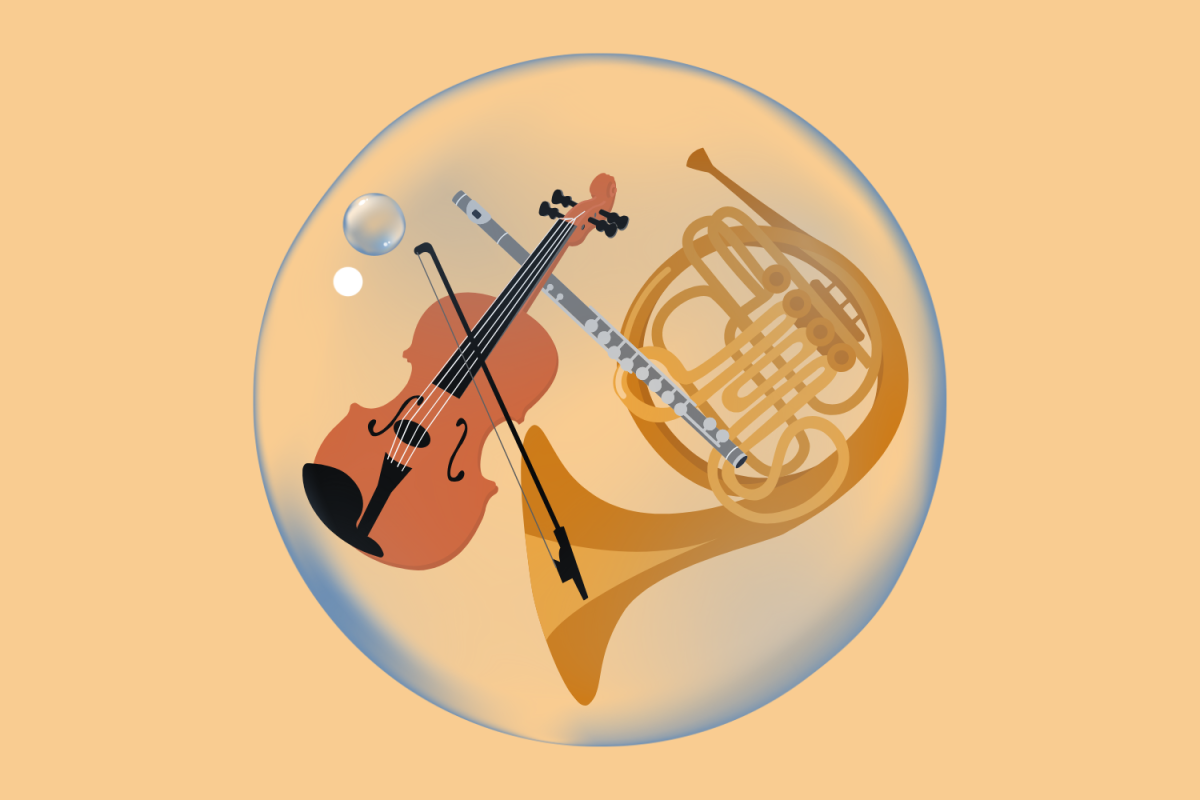On a Sunday morning during fall break, I walked past the Office Depot on the West End and I thought to myself, “Now, why is this here?” This building was right across the street from four major residential colleges — Rothschild, Zeppos, Carmichael and E. Bronson Ingram — yet the stretch of West End lacks excitement, community and value for Vanderbilt. After talking with my friends, I learned this feeling I had is shared among many on Vanderbilt’s campus, and Vanderbilt’s lack of third spaces often brings about the rut of being stuck in the “Vanderbubble.”
“Third spaces,” as defined by sociologist Ray Oldenburg, are areas that aren’t your home (first space) or work (second space). These spaces represent an area that can foster social interaction, gathering, serendipity and catching up. Churches, parks, gyms and recreation centers are all typical examples of third spaces that college students can find. Third spaces can also be in less typical places like thrift shops, art galleries and cafes. Of course, Vanderbilt is surrounded by these spaces, with the most notable being Centennial Park, but they aren’t accessible enough for students to take full advantage. Though the park takes up a large piece of land next door to Vanderbilt, accessing the park requires crossing a major avenue with few areas for walkability. Additionally, the park does not feature enough areas for small social interactions — it is just a massive grass field with a Parthenon replica; there should be more chairs and seating areas.
However, this lack of accessibility is prevalent across potential third spaces near campus. They also do not provide the variety that is needed for such a diverse student population. Let us look at some relevant case examples of college towns with excellent third space and how these ideas can be implemented near Vandy’s campus.
Case examples of good third spaces
The first example is Charlottesville, Virginia. Charlottesville has less than 50,000 residents, yet the downtown area and the surrounding neighborhoods around the University of Virginia are surprisingly walkable. Along with numerous types of restaurants, cafes and social spaces, UVA also features a rapid bus system that facilitates people’s connection and movement, which is instrumental in building a local community. The Virginian and Sammy’s — two restaurants — along with the UVA bus lines that run every 15 minutes are all notable features of the campus and area that help to facilitate third spaces and their development.
Ithaca, New York, is another excellent example of a town with good third spaces. Similarly to the University of Virginia, there are numerous instances in which Cornell University is intertwined with the local populace. Cornell features a bus system that brings students to downtown Ithaca quite easily, along with having major student centers all over campus. Though the campus is large and hilly, these centers work to improve the social atmosphere and environment.
Nashville has a walkability score of 29, according to Walkscore.com, whereas Ithaca and Charlottesville have scores of 72 and 82, respectively. Why is this difference so significant? Even other cities known for being car-dependent regions, such as Charlotte, S.C. or Austin, Tex., still maintain public transportation systems that are only improving yearly. This information is highly relevant because, if Nashville does not keep up with the trend of other cities in the South that are embracing forms of walkability, it prevents students from enjoying a wide variety of experiences.
How to bring change to West End
Vanderbilt has made strides to improve transportation. One notable example is the Vandy Rides system. This change has helped tremendously, especially for those who cannot afford the cost associated with public transportation or ride-share services. In addition, Nashville voters have overwhelmingly voted to support the “Choose how you move” plan, which shows significant community involvement. Yet, this change can go further. Vanderbilt can help to provide funding for mixed-use neighborhoods around campus — essentially creating more areas like Belmont-Hillsboro.
Vanderbilt consistently mentions the need to maintain alumni connections and foster what the administration calls a “Commodore Family.” If Vanderbilt is committed to fostering this kind of community, building and maintaining third spaces around campus could move the Vanderbilt community in the right direction. Vanderbilt students who are also native Nashvillians cite a local love-hate relationship with Vanderbilt and its student populace, so better intertwining with the city and school would only bolster Nashville to become more relevant on the global stage while still maintaining the tight-knit neighborhood network. Vanderbilt can lead the charge on structural changes to better integrate into Nashville. Doing so would benefit not only students and faculty but also nearby residents, leading to a flourishing of the community and neighborhood.
Another project that could both ease transportation needs for students and involve Vanderbilt would be funding more bike lanes around the campus and surrounding neighborhoods. This can be a large opportunity for FutureVU initiatives. Additionally, advocating for more mixed-use development around the campus would help stimulate an increase in third spaces near Vanderbilt that are accessible to students. We already have a very notable neighborhood adjacent to our campus that embodies this idea — Belmont-Hillsboro. By implementing these gradual changes to more sides of campus, Nashville and Vanderbilt can have more integrated third spaces in the area. Rather than spending on campuses in New York and Florida, the administration should focus on making our home here as great as it can be for its students and the future.
Accessibility and the existence of third spaces is instrumental for numerous reasons. Studies have shown that a lack of third spaces drastically impacts the health and wellbeing of community members. These third spaces can especially provide a place that generates social surplus “collective feelings of civic pride, acceptance of diversity, trust, civility, and overall sense of togetherness within a locale through sustained use and connection among residents.” So, when Chancellor Diermeier and the Board of Trustees look for their next small FutureVU development plans, perhaps looking a bit more local can create the biggest impact.









Anonymous Vanderbilt student • Jan 19, 2025 at 11:24 am CST
The argument is flawed because the cities mentioned are small towns like Charlottesville and Ithaca. Nashville has over a million people with over a hundred moving to Nashville per day.
Also, who said this was a problem? When you walk around campus, people are far more likely to complain about so many other things: Greek life, academics, food, mental health, difficulty of clubs, social life, roommate trouble, etc.
Abby • Jan 16, 2025 at 7:33 am CST
Saying that Nashville lacks third places is like saying Paris lacks fashion.
I don’t get it • Jan 14, 2025 at 10:42 am CST
Additionally, Cornell and UVA both have approximately 3x the undergraduate enrollment of Vandy. Do it msjes sense that they have more spaces. Plus, both of those towns literally rely on the student body for maintaining the businesses in the towns. Just visit them in the summer to see what I mean. Nashville’s economy doesn’t completely depend on Vanderbilt. So comparisons are like apples and oranges. I personally think Ithaca and the area around Cornell is pretty awful. One of the reasons it was checked off my list.
I don’t get it • Jan 14, 2025 at 10:19 am CST
Do you actually live on campus? Every residence hall has lots of communal space. The many green spaces all over campus are amazing!
And if a Vanderbilt student has trouble crossing West End Avenue, there are much bigger problems at play. Centennial park is vast and has many smaller areas for people to gather. I’ve seen group outdoor yoga sessions over there. What exactly is the complaint about the space there? I don’t get it. What do you want from that space? Weird.
Finally, a few blocks south is the bustling Hillsboro neighborhood, with many options for dining, shopping.
Maybe you just don’t get out much?
Commenter3 • Jan 10, 2025 at 2:06 pm CST
Vanderbilt has numerous third spaces on and near campus. This take is so out of touch and I suggest the author try living somewhere that isn’t a big city or mommy and daddy’s house.
C Peck • Jan 10, 2025 at 11:06 am CST
1. Sit on the ground. Centennial and Alumni Lawn, etc on campus are designed for a multitude of student interactions: sitting together, frisbee, wiffle ball, studying, etc. ‘Designated sitting areas’ to be together reduces the ability to enjoy these other activities.
2. A lot of those business buildings on West End are either not owned by Vandy or their leases extend for several years. You’ve got to give the school time to implement change there. Look at what the school has done with the bookstore area. The bookstore used to be inside Rand. It is now surrounded by cafes and boutiques.
3. Can’t argue with West End. It’s always been a horrible street to cross, but again, this is not the school’s fault.
4. Bike lanes throughout the city would be nice.
5. Much of the construction on campus has been to either accommodate the growing class sizes and university needs or to (more importantly) replace housing that was out of date and requiring either significant updates or replacement to meet current federal government guidelines for health and safety. These building changes have been occurring nationwide to replace student housing from the 1950s-1980s.
If you want to hear more about the changes Vanderbilt has made over the years, talk to the legacy students. Many of them learned to walk on campus and have seen many of the changes the current admin has done to improve your lives.
– An Alumnae
M M • Jan 9, 2025 at 8:00 am CST
Yes!!!!!
Frosh from WI • Jan 15, 2025 at 1:27 pm CST
No?
Angelica • Jan 8, 2025 at 10:10 pm CST
Nice article. The third space is more than a neighborhood. It’s a home away from home. As you stated, church and other intimate social spaces where everyone knows one another are good examples of communities that support emotional well-being. One thing I didn’t see was a mention of social clubs. Membership has been declining among younger generations. These groups provide an opportunity to socialize while giving back to the community, thus providing double benefits to members and neighbors. These might be groups like Lions, Rotary, Moose or Elks.